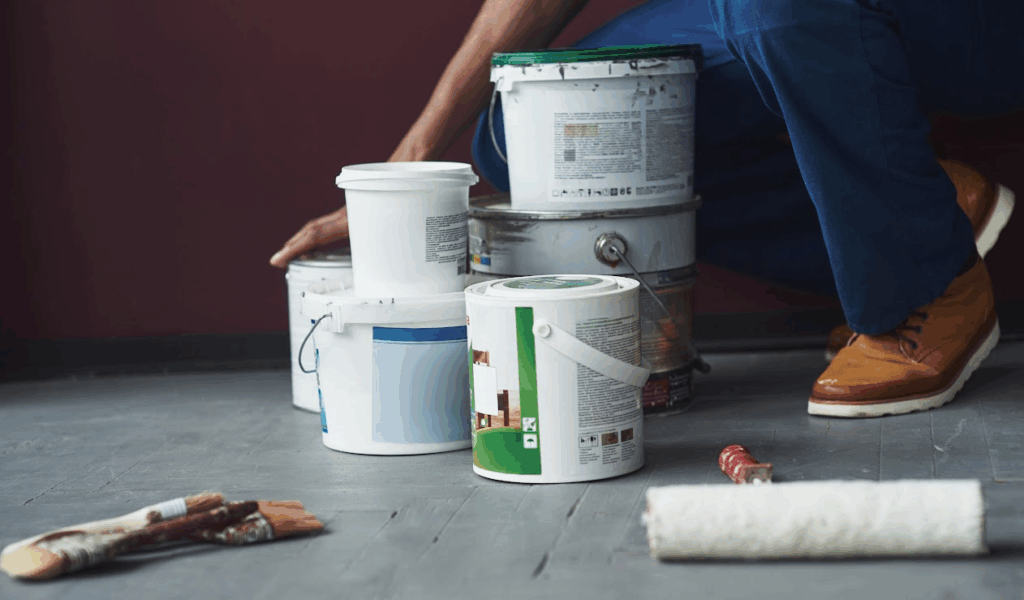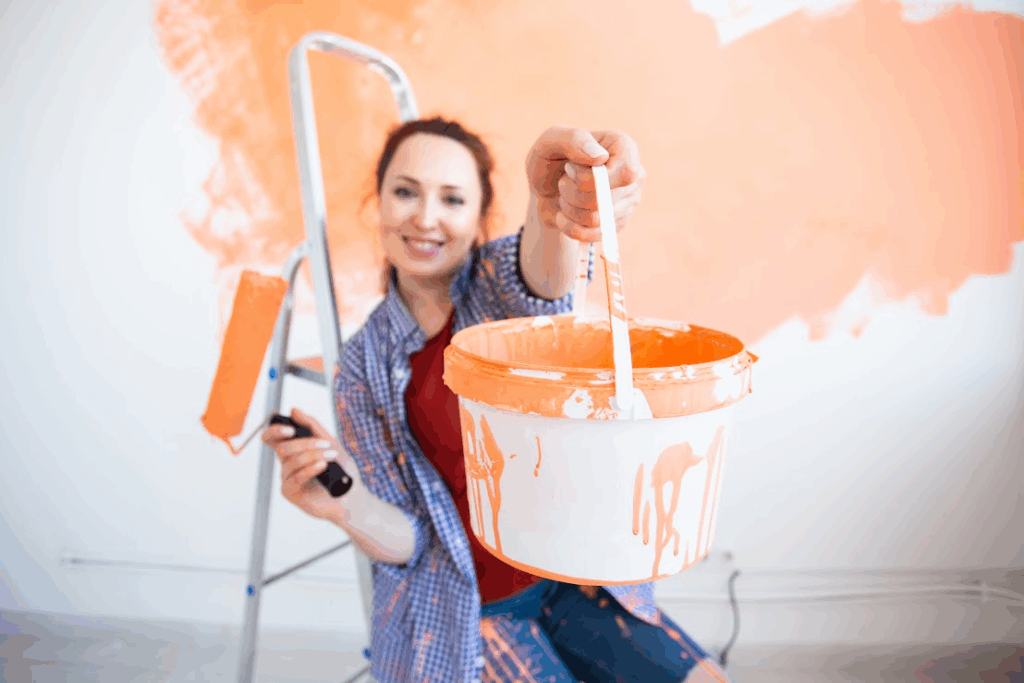
Choosing the best paint for interior walls is essential in designing a visually appealing and functional space. The right paint enhances the atmosphere, provides durability, and complements the overall aesthetic of your home. However, making the right choice can feel overwhelming with many available types, brands, and finishes. Understanding what makes a paint ideal for interior walls can save time, money, and effort while having long-lasting results. Whether painting a new home or refreshing an old space, selecting the right product is key to achieving a flawless finish.
Understanding the Different Paint Options for Interior Walls
The first step in choosing the best paint for interior walls is understanding the different types of paint available. Each type has distinct properties that impact its performance and application:
Latex (Water-Based) Paint
Latex paint is the most commonly used option for interior walls. It dries quickly, has low volatile organic compounds (VOCs), and is easy to clean. It’s also highly resistant to yellowing, making it ideal for areas exposed to natural light. This type of paint is flexible, meaning it can expand and contract with temperature changes without cracking. Additionally, water-based paints are more environmentally friendly than oil-based alternatives and release fewer harmful fumes during application.
Oil-Based Paint
Oil-based paint is less commonly used for interior walls but is still viable for specific applications. It provides a hard, durable finish that withstands heavy wear and tear, making it ideal for trim, doors, and high-traffic areas. However, oil-based paint takes longer to dry, has strong odors, and requires mineral spirits for cleanup. While it can offer excellent durability, many homeowners opt for latex alternatives due to convenience and environmental concerns.
Choosing the Best Paint Finish for Your Interior Walls
Beyond choosing a paint type, selecting the right finish is crucial for achieving the desired look and level of resistance. The finish affects how much light reflects off the walls and how easy the surface is to clean. Here are some different finishes to choose from:
Flat or Matte Finish
A flat or matte finish offers a soft, non-reflective appearance, making it great for hiding wall imperfections. This finish absorbs light, reducing glare and creating a smooth, sophisticated look. However, flat paint is more prone to stains and can be difficult to clean. It’s best used in low-traffic areas such as adult bedrooms, home offices, and ceilings.
Eggshell Finish
Eggshell is one of the most popular finishes for interior walls. It has a slight sheen, offering a balance between elegance and durability. Eggshell finishes are more washable than flat paints while providing a smooth appearance. This finish works well in living rooms, dining areas, and hallways, where some durability is needed without a glossy effect.
Satin Finish
Satin paint has a velvety appearance with more sheen than eggshell. It is long-lasting and easy to clean, making it suitable for busy spaces such as kitchens, bathrooms, and children’s rooms. This finish resists moisture, stains, and dirt, making it ideal for spaces where frequent cleaning is necessary.
Semi-Gloss and Glossy Finishes
Semi-gloss and high-gloss finishes offer a reflective surface that enhances brightness. These finishes are often used for trim, doors, and cabinets due to their ability to withstand scrubbing and moisture. While glossy finishes provide a sleek look, they also highlight wall imperfections, so proper wall preparation is essential before application.
Choosing the Best Paint for Interior Walls
Choosing the right paint for your interior walls involves more than just picking a color. Several factors shape the paint’s overall appeal, sturdiness, and performance. To achieve the best results, it’s essential to consider these aspects:
Durability and Washability
Busy areas require paint that can withstand daily wear and tear. A strong paint ensures the walls remain fresh and clean, even in spaces prone to fingerprints and smudges. Washability is another essential feature, especially in homes with children or pets. The best paint for interior walls should allow easy cleaning without losing color or finish.
Coverage and Application
Quality paint provides better coverage, reducing the number of coats needed to achieve a smooth finish. High-end paints often include primer within the formula, improving adherence and longevity. Using high-quality rollers and brushes also contributes to a professional-looking application. Proper surface preparation, including cleaning and priming, guarantees smooth adhesion and extends the paint’s longevity.
Environmental and Health Considerations
For many homeowners, selecting a paint that promotes a healthier indoor environment is just as important as its color and durability. Low-VOC and zero-VOC paints have become popular because they release fewer harmful chemicals into the air, helping reduce indoor air pollution. These paints are especially beneficial for households with children, pets, or individuals with allergies or respiratory conditions. Labels such as “low odor” or “eco-friendly” indicate that paint contains fewer toxins and produces minimal fumes during application. These environmentally conscious options improve air quality and create a safer and more comfortable home.

Best Paint for Interior Walls With Texture or Imperfections
When painting textured walls or walls with imperfections, choosing the right type of paint can make all the difference in achieving a smooth, even finish. Textured walls, such as those with a knockdown, popcorn, or stipple finish, tend to absorb more paint, leading to uneven coverage if the wrong type of paint is used.
Textured Walls
For textured surfaces, it’s important to use paint with a thicker consistency, such as a high-build or heavy-bodied paint. These paints can help fill in cracks and imperfections while providing better coverage in one or two coats. Additionally, opting for paints that contain a primer can be beneficial, as they help to seal the surface, making it easier for the paint to adhere and last longer.
Walls With Imperfections
If you’re dealing with minor wall imperfections like small holes, dents, or cracks, paint with a built-in primer can also be helpful. It will help smooth out the surface and hide small flaws, giving the wall a more uniform appearance. For larger imperfections, it’s recommended to repair the wall before painting with spackle or joint compound, followed by sanding to create an even surface.
Best Paint Choices for Interior Walls in Different Room Types
Each room in your home serves a different purpose, which means the best paint for interior walls will vary depending on the space. Factors such as moisture resistance and ease of cleaning should be considered to ensure lasting beauty and functionality. Choosing the right paint finish and color for each room enhances the aesthetic appeal while providing the necessary protection against wear and tear.
Living Rooms and Bedrooms
A soft eggshell or satin finish is ideal for living rooms and bedrooms. These finishes create a warm, inviting atmosphere while providing wear resistance. Popular colors include soft neutrals, blues, and earthy tones.
Kitchens and Bathrooms
A satin or semi-gloss finish is recommended for these areas, which are exposed to moisture and frequent cleaning. Light colors can make small spaces feel more prominent, while bold hues add character.
Hallways and Entryways
High-traffic areas require paint that resists scuffs and stains. Satin or eggshell finishes in neutral tones work well to keep these spaces looking polished.
Selecting the best paint for interior walls is more than just choosing a color—it’s about finding the right balance between aesthetics and practicality. Each room in your home has unique needs, and by considering factors such as finish, ease of maintenance, and the overall atmosphere you want to create, you can ensure your walls remain beautiful and functional for years to come.
How to Properly Apply Paint for Interior Walls
Proper application techniques are crucial to achieving a professional look. Even the best paint for interior walls won’t look flawless without the right preparation, tools, and application methods. Taking the time to follow proper painting techniques ensures a smooth, even finish that lasts longer and enhances the overall aesthetic of your home.
Preparation is Key
Walls should be cleaned thoroughly to remove dirt, dust, and grease. Any cracks or holes should be patched before paint is applied. Primer is recommended, especially when transitioning from dark to light colors or painting over new drywall.
Applying the Paint
Using high-quality rollers and brushes ensures an even coat. Cutting edges first and applying multiple thin layers instead of one thick coat prevents streaks and uneven coverage. This technique also reduces the risk of visible brush strokes, ensuring a seamless transition between sections. Allowing each coat to dry completely before applying another layer is recommended for a smooth finish.
Maintaining the Best Paint for Interior Walls
Once painted, walls require maintenance to keep them looking fresh. Avoiding scuffing or leaning heavy objects against walls helps prevent unnecessary damage. Even high-quality paint can show signs of wear over time, which makes keeping up with routine maintenance important.
Regular Cleaning
Dusting walls and wiping them with a damp cloth helps prevent dirt buildup. A microfiber cloth or a soft sponge can effectively remove dust without damaging the paint finish. For tougher stains, mild soap and water should be used. Be careful when using harsh chemicals or abrasive scrubbers, as they can strip the paint or leave behind dull patches.
Touch-Up
Having leftover paint for touch-ups covers small marks or scratches over time. Keeping a record of the exact color and finish will make the repair process more manageable. Before applying a touch-up, gently cleaning and lightly sanding the area can help blend the new paint seamlessly with the existing finish.

Transform Your Space With the Best Paint for Interior Walls
Selecting the best paint for interior walls involves choosing the paint type, finish, lasting wear, and environmental impact. Homeowners can achieve beautiful and long-lasting results by selecting a high-quality brand and applying the paint correctly. From choosing the perfect color to maintaining walls for years to come, every step in the painting process contributes to a home’s overall aesthetic and functionality. With the right paint, your walls can look stunning while standing the test of time.
To learn more about the best paint for interior walls, visit our Euro Painting blog.

